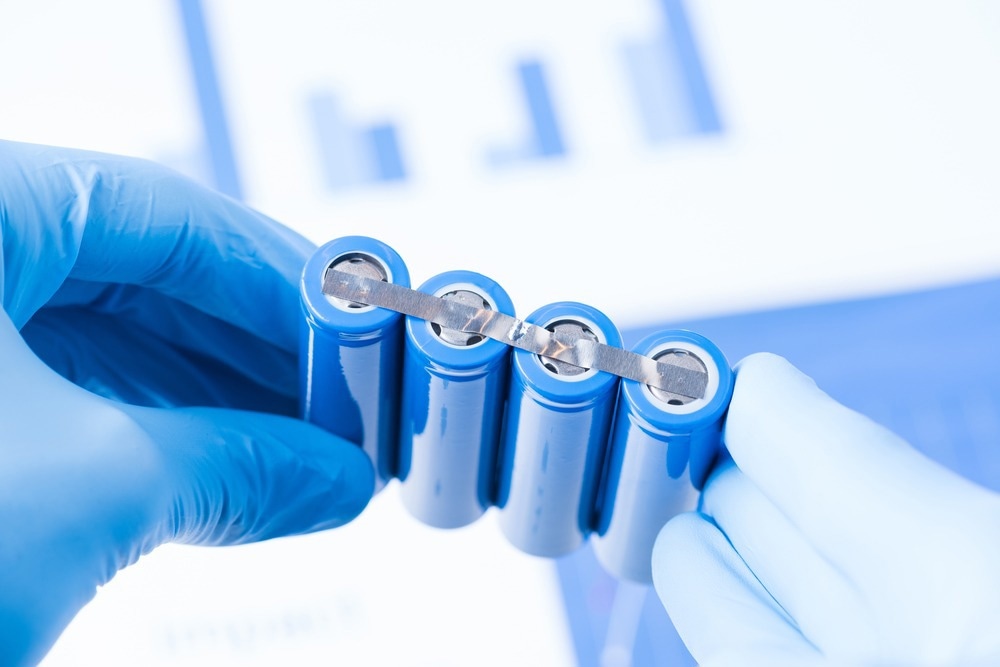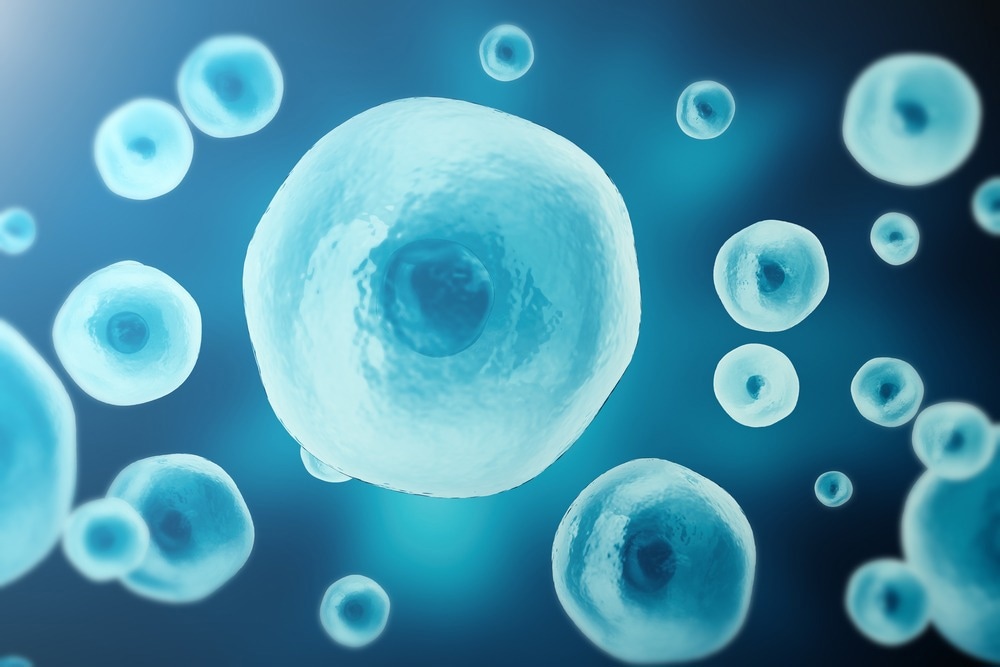Liquid cells enable visualization of specimens in a liquid environment that is impossible in conventional transmission electron microscopes (TEM).
Image Credit: Rost9/Shutterstock.com
Analysis of the nanomaterials and the effect of the liquid environment on them is interesting for understanding their fundamental properties, which is possible through liquid cells. Synthesis of nanomaterials, biological cells living in a liquid environment, electrochemical activity of the nanomaterials at the material electrolyte interface, localized corrosion happening in the material and many more are a few of the applications of liquid cells 1.
Pros of Liquid Cell TEM
In liquid cell TEM, the cell can be maintained in a relatively high pressure environment as the sample volume is encapsulated and maintained in a screening membrane. The top and bottom membranes of the encapsulated specimen liquid cell are very thin and transparent to the incident electron beam. These specimen cells could be encapsulated with gas or liquid; when in a liquid, it is called a liquid cell.
The membranes of the liquid cell in which the sample is encapsulated prevent solvent evaporation and salt precipitation. Thus, analysis of samples in the desired study environment is possible through liquid cells.
Liquid cells are typically made of very thin and robust silicon-based membranes and are only hundreds of nanometers thick. The specimen is injected between the spacing between the two membranes of the liquid cell and confined by o-rings and spacer. The most commonly used silicon membrane for the liquid cell is made up of amorphous silicon nitride (SiN).
TEM analysis utilizing liquid cells could be performed in various other controlled parameters such as liquid flow, temperature/pressure controlled and electrical biasing. This makes it possible to image our sample in various conditions and makes it easy to understand the material behavior 1,2,3.
Graphene Liquid Cell
Graphene or amorphous carbon films as well were explored as membranes for liquid cells. Such liquid cells have reported better resolution because of less scattering of the incident electron beam at the membrane surface and the lesser liquid volume used compared to the silicon-based membrane liquid cells.
However, there are a few drawbacks with the graphene liquid cell compared to silicon-based liquid cell. The encapsulation of the sample has to be done with intense care; the amount of the liquid sample that could be analyzed is significantly less compared to the silicon-based liquid cells. Moreover, microfabrication techniques such as electric biasing and liquid flow circulation are not possible in graphene-liquid cells 4.
Nanomaterial Growth Analysis Through Liquid Cells
Liquid cells were used to study the in-situ growth mechanism of the nanomaterials under required conditions. The growth condition could be manipulated externally in a liquid cell and the synthesis of the nanomaterials could be visualized. Through this approach, the preferred lattice-oriented growth of metallic particles was also reported, exhibiting the importance of metal nanoparticle ligand capping.
Liquid cells were reported to assist in studying the growth mechanism of complex structures such as core-shell, nanorods, nanocages, metal-organic frameworks and many more. In addition, with the help of liquid cells monitoring the growth mechanisms under different environmental conditions was also possible 1,3.

Image Credit: nevodka/Shutterstock.com
Liquid Cell for Battery Research
With liquid cells, the solid-electrolyte interface of the nanomaterial can be visualized and their properties can be studied. The dendrite formation of the lithium ions present in the electrolyte was visualized through the liquid cell TEM and was found to be the possible reason for short-circuiting of the batteries 5.
Analysis of the degradation mechanism of electrode material under the lithiation/delithiation process is another application of liquid cell TEM. Zeng et al. reported such a process in MoS2 nanosheet-based electrode materials in Li-ion batteries with the help of liquid cell TEM. The solid-electrolyte interface was visualized utilizing liquid cells to show fragmentation and expansion of MoS2 sheets and no degradation of the sheet was reported. Similarly, for many other energy conversion and storage applications, liquid cell TEM was employed for the analysis of energy materials 6.
Imaging Biological Samples Through Liquid Cell
Biological samples are very sensitive to temperature and radiation, which makes it difficult to image them through TEM. Liquid cell TEM was demonstrated to image for the first time the eukaryote cell fully immersed in liquid by de Jonge et al.
Up to 4 nm resolution imaging of the biological samples through liquid cell TEM was reported to be possible by Au-labelling of the biological samples. Visualization of the interaction of the biological cells was also reported through liquid cell TEM.
Liquid Cell Key-Players and Startups
Hummingbird Scientific provides liquid cell holders that allow researchers to image their samples, up to atomic resolution, in a liquid environment. Their liquid cells are reported to enable in-situ electrochemistry and heating. Moreover, imaging under static liquid and continuous flow of liquid as well could be taken.
Vitrotem, a spinoff of University of Leiden, focuses mainly on providing solutions for better analysis and understanding of biological samples through electron microscopy. Its product, called Nainad-1, is reported to simplify the assembly of graphene liquid cells for imaging biological samples under TEM.
Protochips is yet another company that has a product named Poseidon AX that enables liquid cell-based TEM analysis. Their liquid cell is reported to have control over in-situ experiment parameters with analysis without compromising the resolution of the microscope.
Overall, analysis of materials or biological samples in the liquid environment through transmission electron microscopy is vital and a liquid cell is the best solution. Many startups and established companies are providing solutions to the same. However, a gap exists regarding the development of reproducible liquid cell membrane and liquid cell setup that provides imaging flexibility under various required sample environmental conditions.
See More: A New Way to Visualize Electrochemical Reactions at the Nanoscale
References and Further Reading
Pu, S., et al. (2020). Liquid cell transmission electron microscopy and its applications. Royal Society open science, 7(1), p.191204. Available at: doi.org/10.1098/rsos.191204.
Ross, F.M., (2015). Opportunities and challenges in liquid cell electron microscopy. Science, 350(6267), p.aaa9886. Available at: doi.org/10.1126/science.aaa9886.
Liao, H.G. and Zheng, H., 2016. Liquid cell transmission electron microscopy. Annual review of physical chemistry, 67, pp.719-747. Available at: doi.org/10.1146/annurev-physchem-040215-112501.
Park, J., et al. (2021). Graphene liquid cell electron microscopy: Progress, applications, and perspectives. ACS nano, 15(1), pp.288-308. Available at: doi.org/10.1021/acsnano.0c10229.
Zeng, Z., et al. (2014). Visualization of electrode–electrolyte interfaces in LiPF6/EC/DEC electrolyte for lithium-ion batteries via in situ TEM. Nano letters, 14(4), pp.1745-1750. Available at: doi.org/10.1021/nl403922u.
Zeng, Z., et al. (2015). In situ study of lithiation and delithiation of MoS2 nanosheets using electrochemical liquid cell transmission electron microscopy. Nano letters, 15(8), pp.5214-5220. Available at: doi.org/10.1021/acs.nanolett.5b02483.
Jonge, N.D., et al. (2009). Electron microscopy of whole cells in liquid with nanometer resolution. Proceedings of the National Academy of Sciences, 106(7), pp.2159-2164. Available at: doi.org/10.1073/pnas.0809567106.


